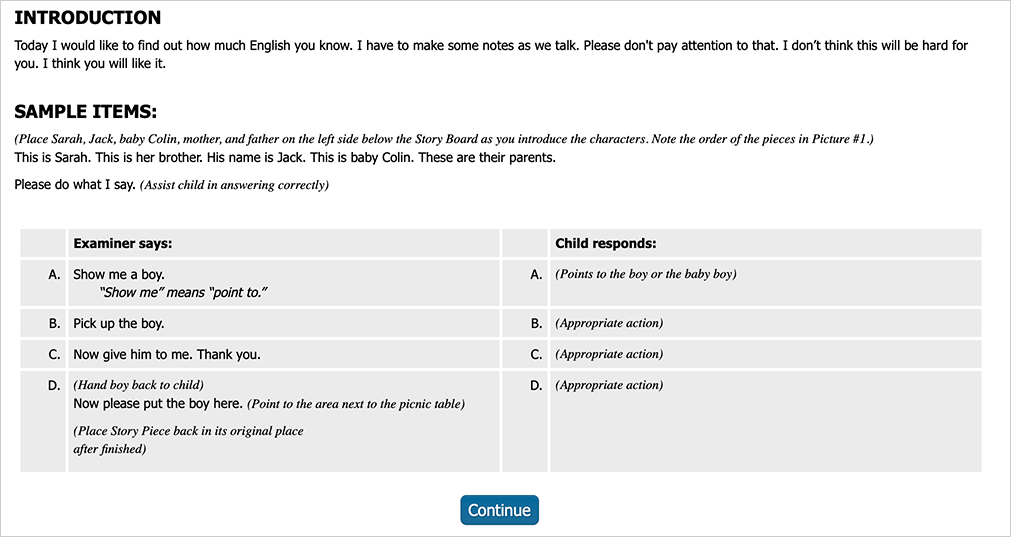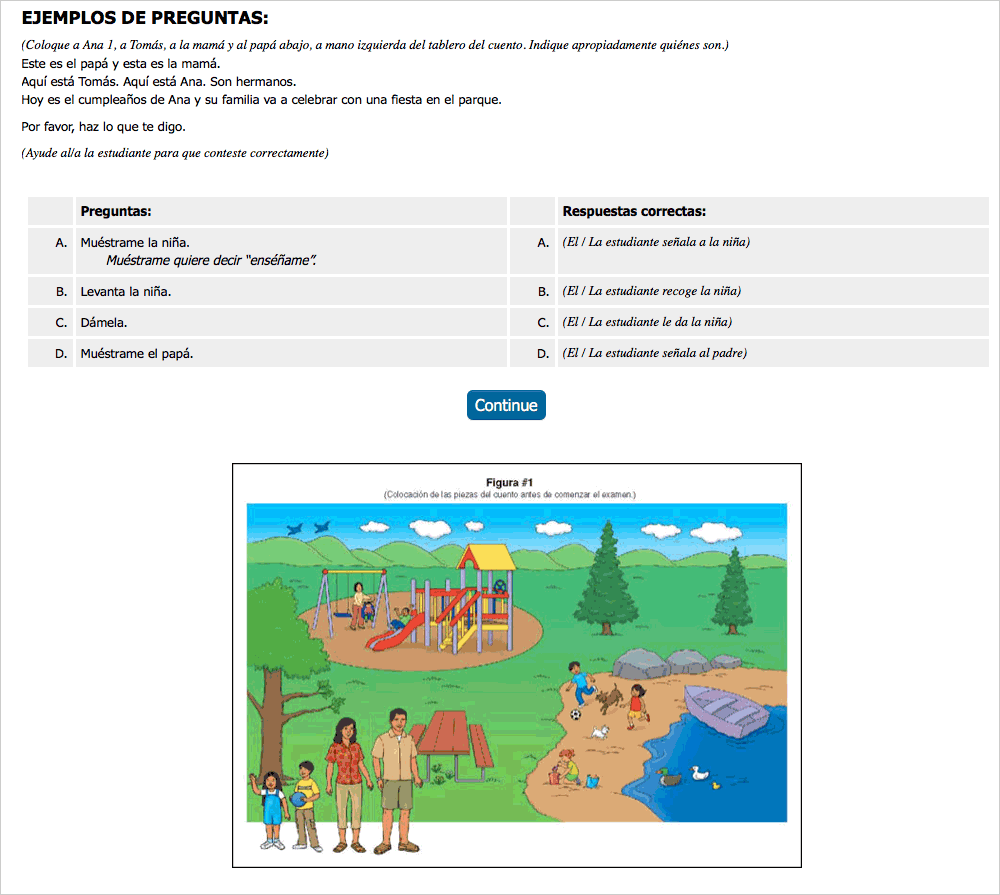When a test session is about to begin, your first goal is to make the student feel comfortable in the testing situation. (Avoid testing a student who is clearly in distress.) If you are responsible for transitioning the student to the testing room, you may converse with the student in any language that the student is comfortable using. However, when the examiner and student are seated and ready to begin testing and the examiner reads the introduction from the computer screen, it is important to use the test language only: English in the IPT English tests and Spanish in the IPT Spanish tests. It is also important to follow the examiner script exactly. Below is an excerpt from the beginning of the Pre-IPT—Oral English Test.
Today I would like to find out how much English you know. I have to click a button every time you answer, so please don’t pay attention to my clicking. I don’t think this will be hard for you. Just relax and do your best.
After this, the test begins with the sample items and then the actual test items. Let’s take a look at the sample items

Click here to look at the beginning of the test in the Pre-IPT—Oral Spanish Test.
The sample items are designed to make the student feel comfortable and become familiar with the testing format. These sample items must be given in English on the English test and Spanish on the Spanish test. Once you have completed the sample items, the operational test questions will begin.
All the instructions you need are given on the screen. Everything you should say is noted under “Examiner says/Preguntas” on the left side of the screen. Ask the student the test item exactly as it is written. Acceptable responses are noted under the “Child Responds/Respuestas correctas” column on the right.
All student responses are scored as either “Correct/Correcto” or “Incorrect/Incorrecto” and recorded as you test. The correct answers are listed in the “Child Responds/Respuestas correctas” column on the computer screen. If the student answers correctly, the examiner clicks “Correct/Correcto.” If the student does not give the correct response even after the prompt has been repeated or a supplementary prompt has been used, the examiner clicks “Incorrect/Incorrecto”. The examiner must take care to stay on the correct line when scoring the student responses.
Each test item is testing a specific oral language skill. In some test items, the student’s ability to say a complete sentence or ask a question is being tested. In these cases, the whole sentence is shown as an answer in the “Child Responds/Respuestas Correctas” column. The student must answer with a complete sentence for credit. In other items, the student may complete his or her answer with any logical response that does not require a complete sentence. In these cases, the student only needs to say the portion of the answer indicated in the “Child Responds/Respuestas Correctas” column.
Acceptable responses are:
- Responses that are appropriate to the question and that meet the requirements of the item, e.g., use an appropriate grammatical form, or describe an item accurately.
- When specific vocabulary words are listed in the answer column, you should only score the student correct if he or she gives one of the correct answers that are listed.
- Variations of pronunciation are acceptable as long as the student’s response is comprehensible.
- Responses that are more extended than the expected response, as long as one of the expected responses is included in the student’s answer.
- Any of the responses when two or more answers are listed, all separated by slash marks (/).
- One-word responses when these are indicated as acceptable in the “Child Responds/Respuestas correctas” column.
Copyright © 2021 Ballard & Tighe, Publishers, a division of Educational Ideas, Inc.
These pages may be printed for use by course participants only.

